Warsaw has plainly stated its ambition to have more skyscrapers than any other city in Europe. The city currently has 25 buildings of over 100m, with another 10 approved for construction in the coming years. The number of proposed skyscrapers seeking approval at this very moment would potentially bring the total up to 65. Beloved by locals and symbolic of the city's bold vision and ambition to be the most modern capital in Europe, let's take a look at some of the most notable towers and viewpoints in Warsaw, beginning with the tallest.
Varso Tower
ul. Chmielna 69/71
Poland now possesses the tallest building in the EU at 310m, though it begs pointing out that the last 80m is actually a completely pointless and not particularly attractive spire. As such, the roof level is actually at 230m, and is planned to be a public observation deck (VistaTerrace) offering the highest views available, while keeping your feet on solid ground. The Skytop restaurant and bar will occupy the 46th and 48th floors. Varso is expected to be fully operational by the end of 2022.
Palace of Culture & Science
Plac Defilad 1Following the war Warsaw’s rush to rebuild saw the construction of what has become the city's defining icon. Dominating the city skyline, the fearsome Palace of Culture & Science (PKiN) towers at just over 231 metres and was for many decades the tallest and largest structure in Poland. Commissioned by Stalin as a 'gift from the Soviet people,' it was originally interpreted as a reminder from Moscow that Big Brother really was watching. To this day it still stirs mixed feelings from locals and architecture buffs, and the collapse of communism even saw calls to demolish it.
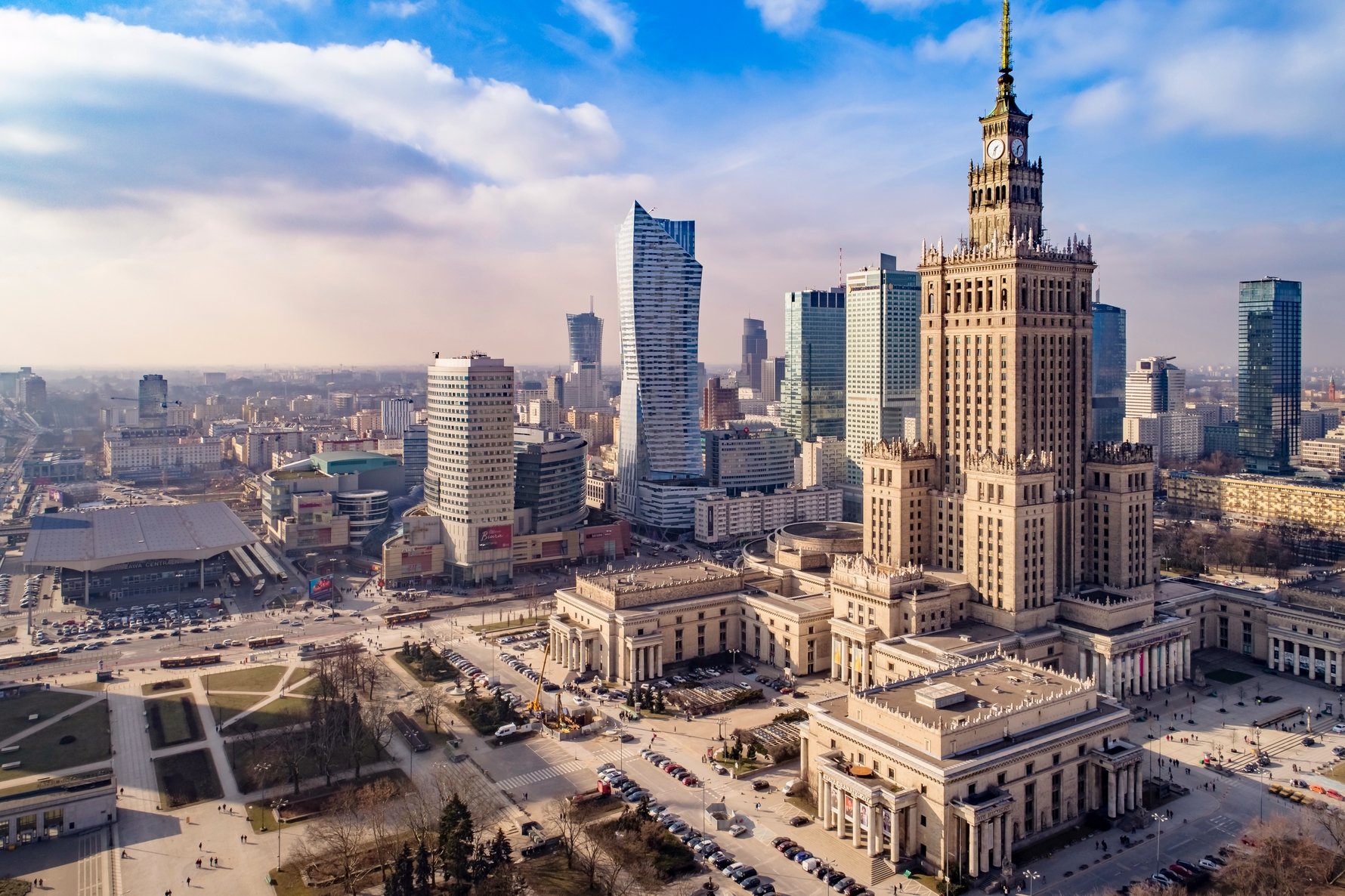
On April 5, 1952 Soviet representative Nikolaj Sobolev and Polish Prime Minister Józef Cyrankiewicz stamped the deal to build the monstrosity over a meeting in what is now the Belvedere restaurant. Within weeks construction had begun. Over 3,500 workers were ferried in from the Soviet states and housed in a purpose-built village in Jelonki, west Warsaw, where they were effectively cut off from the outside world. Working around the clock, it took them just three years to complete the Palace. Designed by Soviet architect Lev Rudnyev (also responsible for Lomonosov University in Moscow), it is a fabulous example of socialist era architecture and also incorporates several more traditional styles (the pillars and parapets were apparently inspired by the Cloth Hall in Kraków's Old Town Square). Built using an estimated 40 million bricks and housing 3,288 rooms, the vast Palace can allegedly be seen from a distance of 30km. Originally intended to serve as the Communist party HQ, the multi-purpose building currently houses museums, restaurants, theatres, conference halls, offices etc. The Sala Kongresowa (Congress Hall) is big enough to hold 3,000 people, and it was here in 1967 that the Rolling Stones became one of the first western bands to perform to an Eastern Bloc audience. According to urban legend, an army of wild cats now live in the cavernous basements, feasting on the legions of rodents who also reside within the building's gloomy bowels.
The highest clock tower in the world was added to the structure and unveiled on January 1, 2001 and visitors should pencil in a visit to the viewing platform. Buy your tickets first, then take an elevator - complete with attendant - all the way up to the 30th floor for panoramic views from an actual open-air terrace. The only problem with these views is that the Palace of Culture isn't in them.
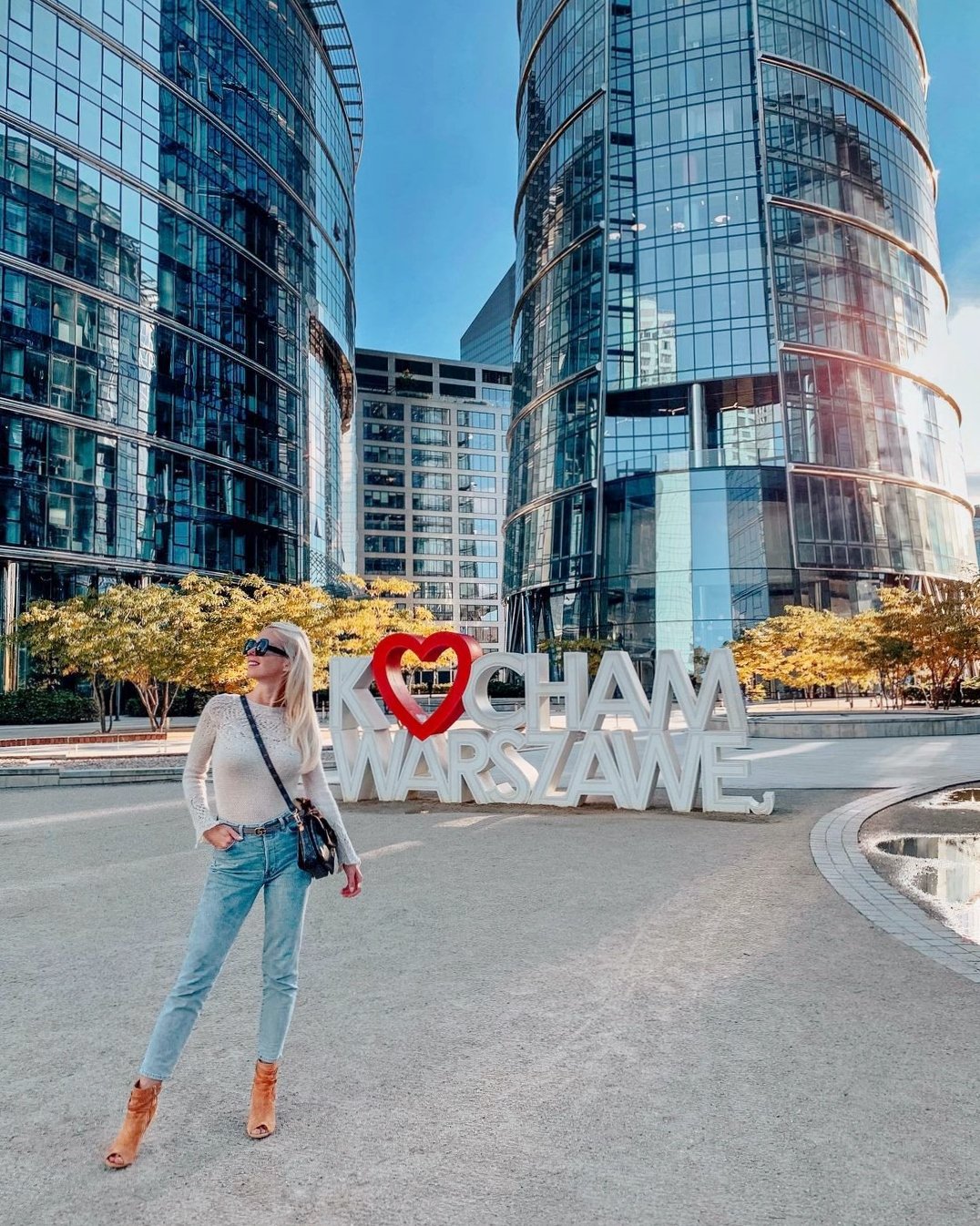
Warsaw Spire
Plac Europejski 1, 2, 6Warsaw's 3rd tallest tower (220m), is also one of its most aesthetically pleasing. A neomodern office building featuring a hyperbolic (inward curving) glass facade, upon its completion in 2016, it quickly won the MIPIM Award for Best Office and Business Development in the world. Highly praised by industry insiders, as well as local residents, the building is the headquarters for FRONTEX - the European Border and Coast Guard Agency, and the project includes the new public square - Plac Europejski, located between the three buildings. Worth a visit, the small square has a lot of features: trees, benches, fountains, reflecting pools, two large murals, an amphitheatre, a unique Art Walk gallery where changing exhibits are displayed, and an iconic 3D Instagram-baiting installation that says 'Kocham Warszawę' (I Love Warsaw). What's more, there's something happening year-round, including concerts, film screenings, frequent live sports transmissions and an ice rink in winter. Of course there are cafes, bars and food options as well, making this a very unique place to hang out in Warsaw's business district, particularly after a visit to the Warsaw Rising Museum, which is just across the street.
Warsaw Trade Tower
ul. Chłodna 51Finished in 1999, the Warsaw Trade Tower stands on the horizon like a tall, mutant pencil. Measuring 208 metres, the tube-like structure boasts some of the fastest elevators on the continent and ranks as the 5th tallest building in the city (for now).
Warsaw UNIT
Rondo Daszyńskiego 1Warsaw’s 5th tallest tower (202m) was completed in 2021. Its main attractions are located on the 46th floor, which offers a fantastic view of the whole Warsaw skyline. Here you can find a Skybar and the wild new adrenaline attraction Skyfall Warsaw - a vertigo-inducing glass box that dangles outside the building and suddenly tilts 15 degrees forward!

Złota 44
ul. Złota 44Designed by famous Polish-American architect Daniel Libeskind, this luxury residential tower is one of Wawa's most beautiful and distinctive skyscrapers, as well as its 7th tallest (192m). For the full story on this storied tower, see our dedicated feature.

InterContinental Hotel
ul. Emili Plater 49Part of the forest of skyscrapers that have sprung up around the Palace of Culture, Warsaw's InterContinental Hotel was completed in 2013 and is one of the tallest 5-star hotels in the world. The hotel's unique 'cut-out' design was created by Tadeusz Spychała to appease complaints from local residents that the hotel would completely block their access to sunlight. Among the hotel's many unique features is the swimming pool 150m up in the air - the highest pool in the country, and open to non-guests.
Centrum LIM
Al. Jerozolimskie 65/79Directly opposite stands the Warsaw Presidential Hotel. A simple glass structure, the 140-metre hotel (previously the Marriott) was the stage for Alain Robert’s first appearance in Eastern Europe. Otherwise known as the French Spiderman, Robert scaled the 41-storey hotel with his bare hands, cheered on by a crowd of thousands. The Panorama Bar on the 40th floor offers a liquid way to view the city. The beer is among the most expensive in the city, but when you compare that to what the Palace of Culture charges it becomes something of a bargain: beer, view, no wind, and no hollering school children.
The HUB Warsaw
Rondo Daszyńskiego 2The Warsaw Hub, previously known as Sienna Towers, is a complex of mixed-use buildings completed in 2020 by Belgian real estate developer Ghelamco. It consists of two 130m buildings and an 86-meter building near the Warsaw Rising Museum. Home to the Crowne Plaza Hotel, the views from the rooms and various dining establishments inside are amazing, including the Crown Plaza Roof Bar on the 21st floor.
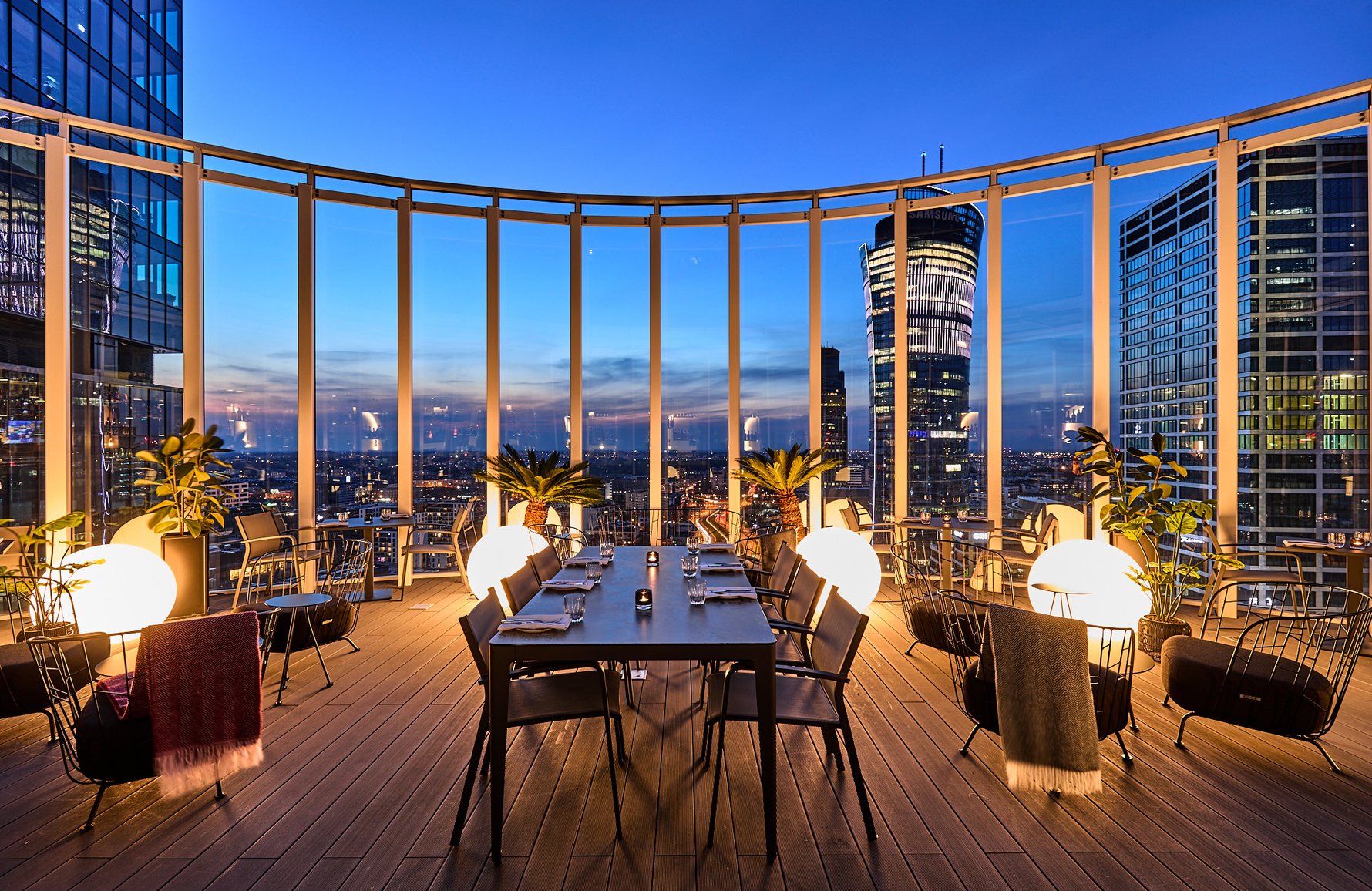
Atlas Tower
Al. Jerozolimskie 123A
Formerly known as the 'Millenium Tower' and before that the 'Reform Plaza,' this 112m office complex was completed in 1999. The brainchild of eccentric and controversial Turkish entrepreneur Vahap Toy, Toy made headlines with an outlandish 6 million USD plan to transform the tiny town of Biała Podlaska by building an international airport, formula 1 racetrack and a replica of the Eiffel Tower. That never happened, in fact he was run out of Poland before his Warsaw project was even complete. An imposing blue and white building, Atlas Tower is known by locals as 'Toi-toi' (pronounced toy-toy)- a reference to its creator's surname and its resemblance to a porta-loo (Toi Toi being a popular Polish brand). The tower is the source of thousands of juicy rumours, all of them unfortunately too libellous for print, however visitors have the chance to write their own salacious stories by visiting the 27th floor - home to Level 27, one of the best luxury roof clubs in the world. The buiulding is also home to the eye-opening Warsaw Invisible Exhibition.

Novotel
ul. Marszałkowska 94/98
Originally known as 'the Forum,' or by its nickname 'Dollar Towers' during communist times, the giant Novotel was the first high-class hotel to be built in post-war Poland when it was completed in 1974. At 111m it was the second-tallest building in PL after the Palace of Culture. Now owned by the Accor hotel group, it underwent a €30 million refit in 2005 which resulted in the structure transforming from yellow to grey.
Blue Tower
Plac Bankowy 2
Another skyscraper with an interesting history is the Blue Tower, a.k.a. the Peugeot Tower on Plac Bankowy. Once the site of Warsaw’s largest synagogue and dynamited by the Nazis, an urban myth was circulated that a rabbi placed a curse on the ground that no building would ever take its place. In a supernatural twist, the Blue Tower took over three decades to complete, allegedly only after a more forgiving rabbi removed the curse.
Westin Hotel
Al. Jana Pawła II 21
But for the best lift ride in Warsaw check into the Westin Hotel. A glass elevator shoots up and down the 90-metre scraper, giving excellent views of the immediate area.
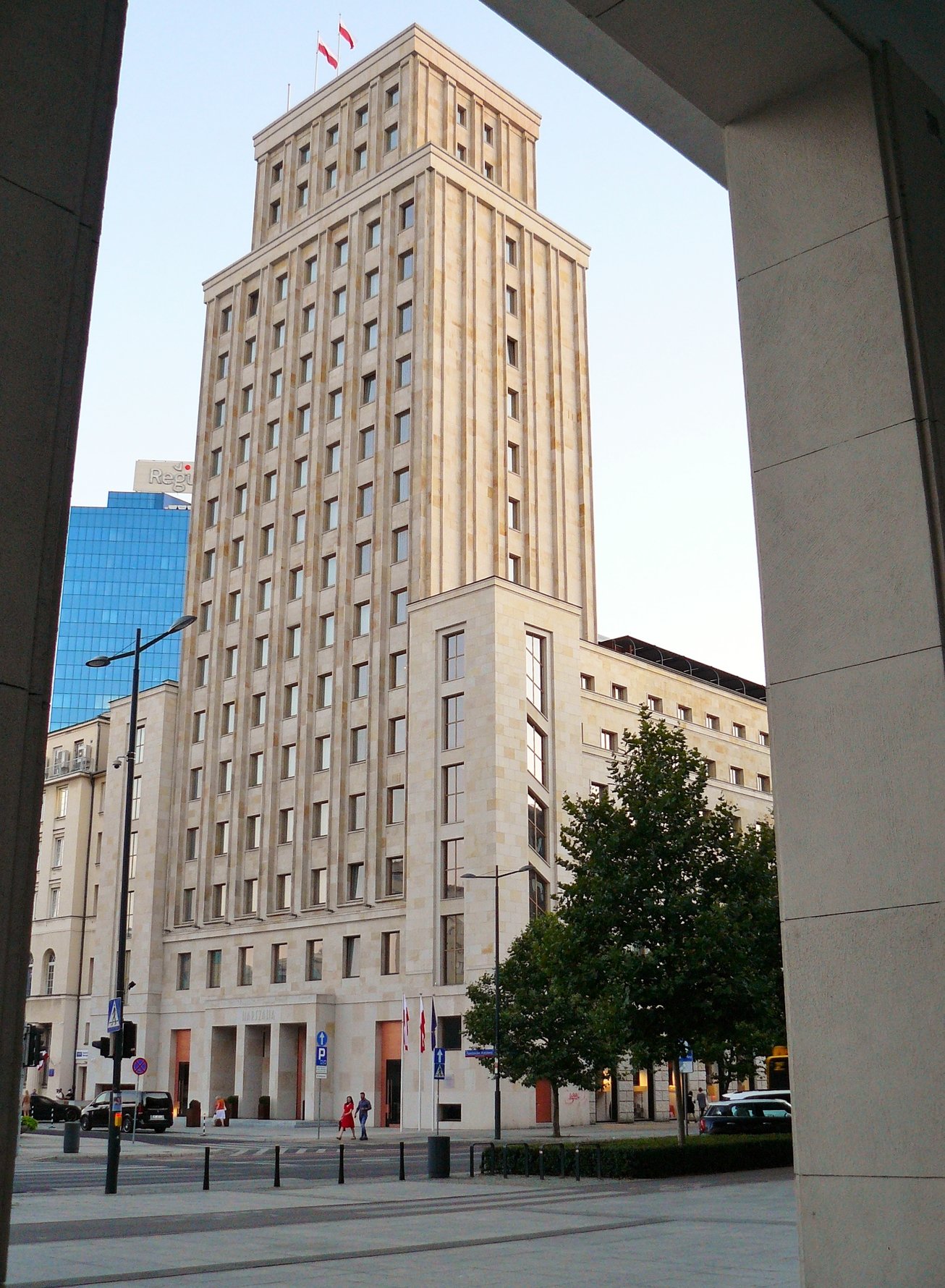
Prudential Tower/Hotel Warszawa
Plac Powstańców Warszawy 9
Warsaw’s love affair with skyscrapers can be traced back to the 1930s and the erection of the Prudential Insurance Building. Completed in 1933 at a height of 61 metres, the New York-style structure became the city’s first skyscraper. With the advent of WWII its height lent it immense strategic importance. When the 1944 Warsaw Uprising broke out it became a primary target for Poland’s Home Army, and was captured on the first day of battle – for the first time in five years the Polish flag flew over the city. The Germans launched a series of fierce strikes to win it back, and although shells gutted the building, its steel skeleton refused to topple. Patched up after the war the Prudential building became the communist-era Hotel Warszawa, and was remodelled into one of the capital's top luxury hotels by the Likus group in 2018.


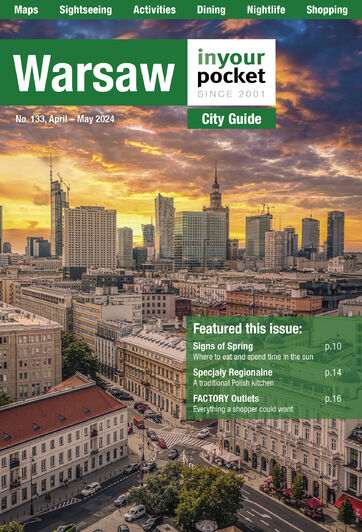
Comments